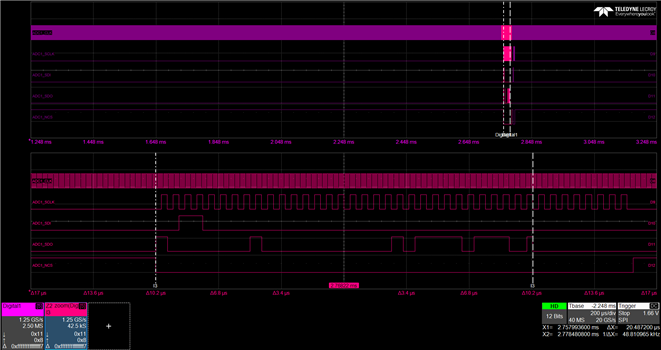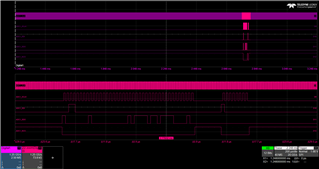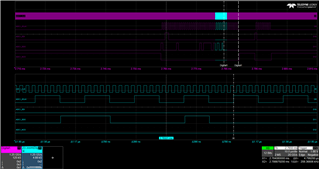Other Parts Discussed in Thread: ADS1158
Hello,
I am using the ADS1258. the CLK frequency is 12.5 MHz, SCLK frequency is 1.5625 MHz.
The ADC is running in Auto-Scan mode. Te register condiguration is the following:
CONFIG0 0x56
CONFIG1 0x40
MUXSCH 0x00
MUXDIF 0x3F
MUXSG0 0x00
MUXSG1 0xF0
SYSRED 0x00
GPIOC 0x00
GPIOD 0x00
The sequence is:
1. Write ADC configuration
2. Send pulse convert command 0x80
3. Wait for conversion
4. Read channel data 0x30
I see that the SPI interface sometimes goes into reset even when SCLK is active, missing the last byte of the channel data value.
The SPI goes into reset ~20,84 µs after the communication starts, that is 256 fclk cycles.
From the datasheet, I understand that the SPI interface should not go into reset while SCLK is active.
Have you observed this behaviour before?





